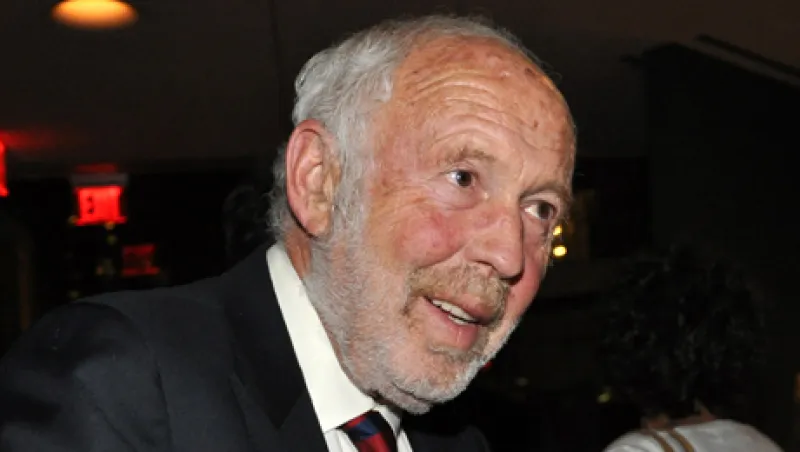A pair of funds run by James Simons’ Renaissance Technologies were among the best performing hedge funds in July.
The Renaissance Institutional Futures Fund (RIFF) was up 3.5 percent for the month, putting it back into the black for the year by 1 percent.
The Renaissance Institutional Diversified Alpha Fund, Renaissance’s fourth fund, which was launched on March 1, was up 4 percent in July, putting it up 4 percent for the year as well. The fund is designed to be more volatile than the Renaissance Institutional Equities Fund (RIEF), which is measured against a benchmark. RIEF, created to generate gross annual returns of 400 to 600 basis points above the S&P 500 over rolling 3-year to 5-year periods, was up just 2 percent in July but has surged 11 percent for the year through July.
The S&P 500 was only up 1.3 percent in July and 11 percent for the year. The Dow was up 1 percent in July while the Nasdaq inched up by only 0.2 percent.
Elsewhere, David Einhorn’s Greenlight Capital climbed 2.7 percent in July, putting it up 6.4 percent for the year. An investment account of Greenlight Capital Re — an insurance company controlled by Einhorn — which is managed by a Greenlight Capital entity, reported that at the end of July, the largest disclosed long positions in its investment portfolio were Apple, General Motors, gold, Marvell Technology Group and Seagate Technology. Its investment portfolio was roughly 102 percent long and 59 percent short.
Ken Griffin’s Citadel flagship Wellington fund was up 2.6 percent for July and 11.75 year-to-date. Citdel’s assets under management are $13 billion.
Dan Loeb’s Third Point Offshore Fund made 1.6 percent in July, putting it up 5.5 percent for the year-to-date. Its biggest winners — excluding currency, hedges and any confidential positions — were Apple, Delphi, Lehman Brothers Holdings, a healthcare short and what Third Point calls a consumer short.
Its biggest losers for the month were what it calls a government short and four healthcare stocks — Cigna, Humana, UnitedHealth Group and Wellpoint.
Its top positions as of the end of July were Apple, Delphi, gold, Kraft Foods and Yahoo.
Dan Och’s Och-Ziff, which runs a much more conservative fund, posted more modest gains. OZ Master Fund, by far its largest fund, squeezed out a 0.65 percent gain for the month. For the year it is up 5.56 percent. In fact all four of its main funds were up between 0.33 percent and 0.65 percent.
Meanwhile, BH Macro Fund made 2.30 percent in July. This enabled it to cut its loss to 1.44 percent through July. BH Macro is a listed feeder fund that invests its assets in Alan Howard’s Brevan Howard Master Fund. BH Macro’s assets are around $3.2 billion, compared with roughly $26 billion in the Master Fund. BH Macro’s returns closely track the Master Fund.
One of the better performers in July and for the year is a relatively small, newer fund. The $750 million Kepos Capital Fund, a statistical arbitrage fund launched by former Goldman Sachs quant hotshot Mark Carhart in January 2011, made 5.2 percent in July and is up 11.2 percent for the year.







